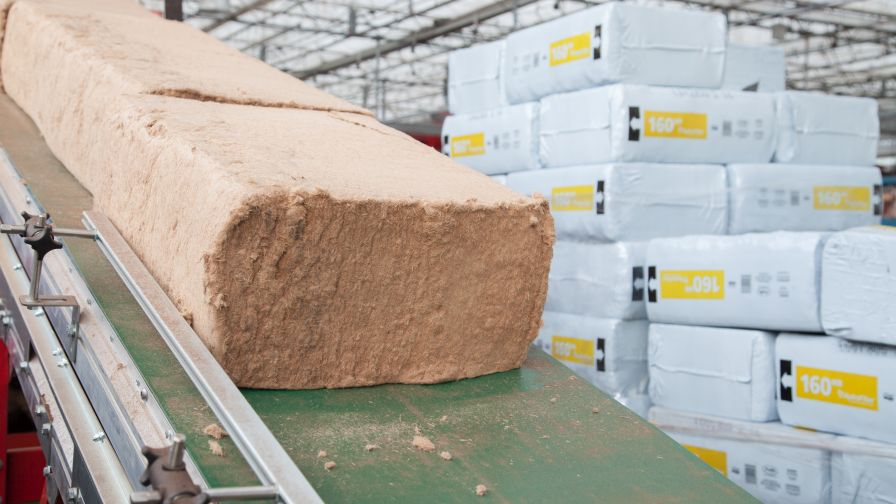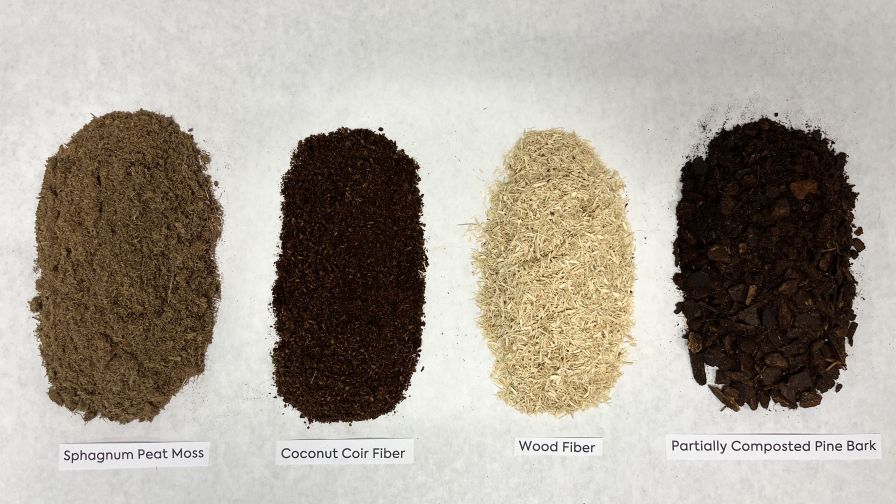
Concerns over shipping and delivery mean growers are more reliant on having a steady supply of engineered fiber. Photo: Profile Products LLC
We don’t always think of growing media when talking about innovations. Other areas of the plant-growing business often get most of the attention, including new lighting tech, climate controllers, the introduction of artificial intelligence, and even machine automation. But new innovations in the substrate that plants call home are picking up speed.
“What’s most important for producing any plant is its initial start after propagation, whether from seed or cuttings. Environmental conditions and lighting all have an effect. But if you have poor substrate, or something going wrong in the root zone, the rest won’t matter,” says Kyle Freedman, Global Segment Manager, CEA Jiffy Group.
What are suppliers working on to solve grower pain points? Not just new materials, but also new places to source them are receiving a lot of attention. Quite a bit of work is going into the logistics side.
New Sources of Fiber
Finding new sources of fiber is at the top of innovation efforts from suppliers. It’s not an anti-peat movement, either. Utilizing other sources of fiber makes good sense from an environmental, economic, and supply chain logistics standpoint. But don’t expect peat to vanish. Innovations are focused more on creating alternatives to stabilize supply and lower costs.
“Peat still makes up the majority of growing media. And I think it’s no secret that it probably will continue to occupy most of the growing media. But growing media is quite a big industry,” Freedman says. “A lot of people are looking for alternatives or ways to blend it just to have more options. Whether it’s about sustainability, or performance, or even sourcing, it’s a given that peat only comes from certain parts of the world.”
Weather conditions can impact peat harvests, which can wreak havoc on supplies.
“When peat harvesting is limited by rainy weather, producers can be short by 20% to 25%. In the short years, growers need to find other materials to stretch their growing media supply,” says Ed Bloodnick, Grower Services Director, Premier Tech Growers and Consumers. A diversity of organic fibers, such as coir, wood fiber, or composted bark, means growers’ needs can still be met, even if the weather doesn’t cooperate.
Expect to see more recycled products from waste streams entering the market, upcycled, and engineered into useful products. From coir to wood products left over from logging and the wood industry, fiber normally sent to the landfill or burned like in the sugar cane industry is now being developed as growing media.

Familiar organic materials that are used in formulating growing media, arranged left to right from highest to lowest water holding capacity. Photo: Premier Tech Growers and Consumers
Sustainability and Traceability
“There’s no doubt that growers are hungry for sustainability,” says Jeff Langner, Senior Marketing Manager at Profile Products. With growing pressure from retailers and consumers to move toward more sustainable products and practices, the need for traceability in growing media is expanding.
“Anybody can say they’re doing things sustainably, but for us to be able to document that our HydraFiber products are made with wood fiber from 100% renewable resources and recycled material, to be able to say that our peat is certified as being responsibly harvested, those are all barometers that show we’re walking the walk,” Langner says. “And I think growers want that from a supply partner.”
Concerns over peat use, whether valid or misplaced, are still at the forefront of the conversation. Canadian peat lands have been managed differently from European sources, and it’s worth emphasizing.
“Sustainably harvested peat has been that way in Canada for many years, and peat bog management is very closely monitored by provincial governments. More than 30 years ago, Premier Tech initiated practices for sustainability and restoration of peat bogs,” Bloodnick says.
Research in techniques to restore harvested peatlands by Dr. Line Rochefort of Université Laval in Quebec resulted in standards called the Peat Restoration Guide.
“I would say about 98% of all the [peat] producers in Canada use this guide as the reference,” Bloodnick says. “These producers are VeriFlora Certified for responsible peat bog management, sustainability, and treatment of employees.”
Solving Supply Chain Issues
The last few years have emphasized that supply chain reliability is beyond important. Global supply chains can be vulnerable. Sourcing products only available from a specific region of the world is shifting, in part, to utilizing new materials from semi-local waste streams. Developing localized fiber sources reduces the potential for border closures, port closures due to labor strikes, or shipping issues to disrupt the supply chain.
Langner frames the problem this way: “Am I waiting for a shipping container of coir to come over from India? Am I reliant on a peat harvest that may or may not happen with the weather? Or do I have an engineered fiber I know I can get 24/7 all year?”
Long lead times and freight costs are also targets for improvement by suppliers.
“It’s a huge desire, trying to reduce lead times. There’s an opportunity to source some material locally and have less of a stress on supply chain or even reduction in freight,” Freedman says.
“Transportation is such a big cost for growers with growing media, depending on where it’s coming from. If you can minimize that by sourcing materials more locally, that
could really have a positive impact on growers.”
Shifting Toward Biodegradable Materials
It seems like all growing media would be biodegradable or compostable, but that’s not the case, and it can pile up. While the base media may be a natural fiber, additives to assist in machine handling of substrates aren’t always compatible with environmentally friendly disposal. And the ability to sell used growing media, much like mushroom growers have been doing for years, could create another revenue stream.
“Using material that’s biodegradable and can be repurposed after production is something that’s on everyone’s mind. I don’t think we’re there yet as an industry, but there’s a lot of R&D going into that,” Freedman says. “With automation, there have been great advances in technology to streamline the functions of production around growing media, but that hasn’t always come with a product that’s fully biodegradable. A foam or a plastic base-type product can’t just be composted.”
Fully biodegradable growing media makes it easier for growers to dispose of when needed.
“Some growers are looking at additional revenue streams, perhaps selling it to a composter to create value. No matter what you use, you need a place to get rid of it, and there’s a cost associated with sending it to the landfill,” Freedman says. “You really have to think through the entire life cycle of the product you’re using and what you’re going to do with it.”

